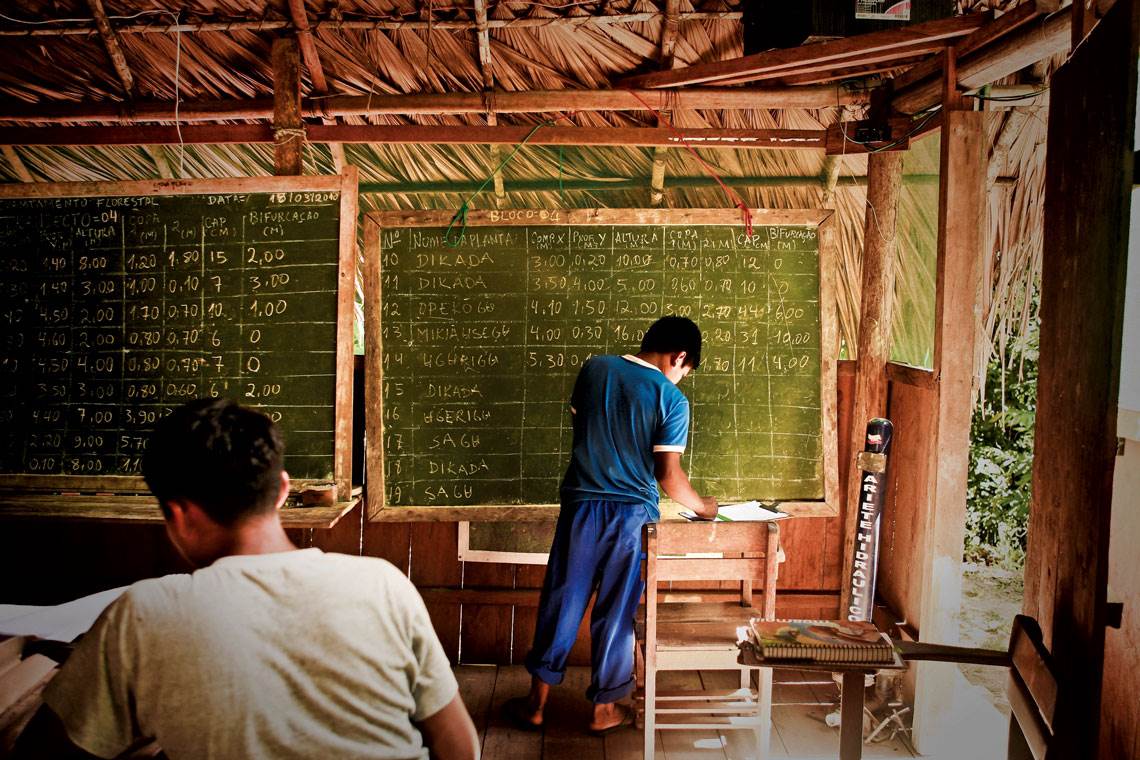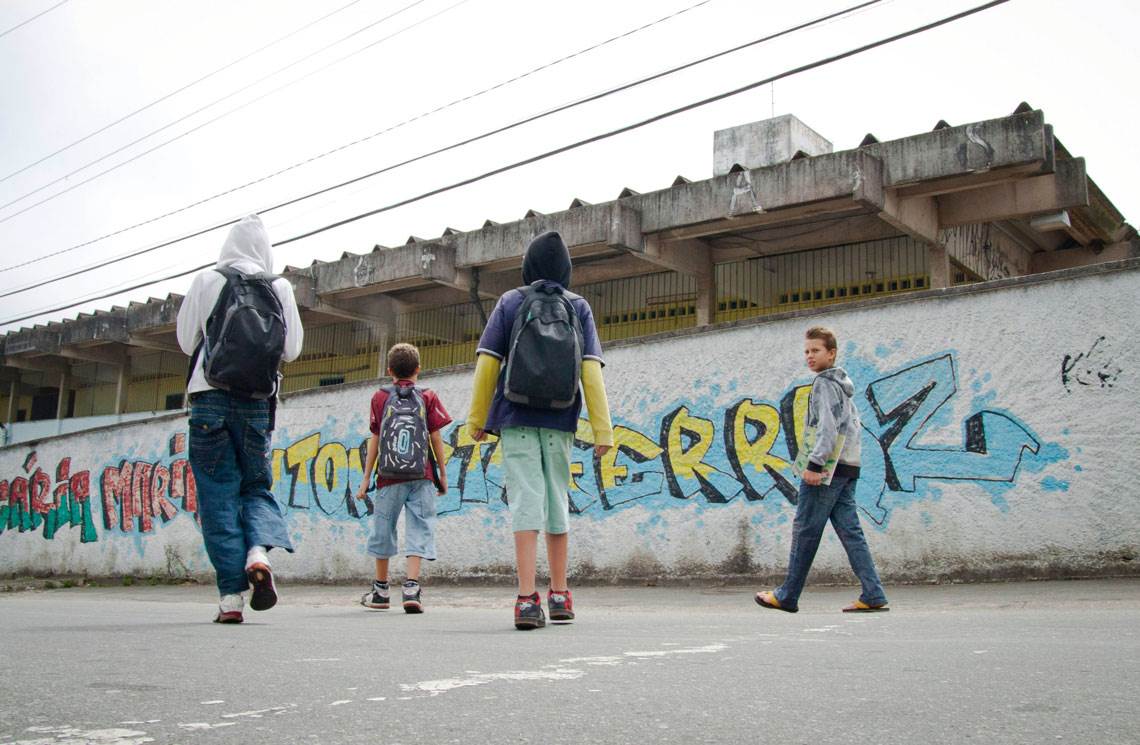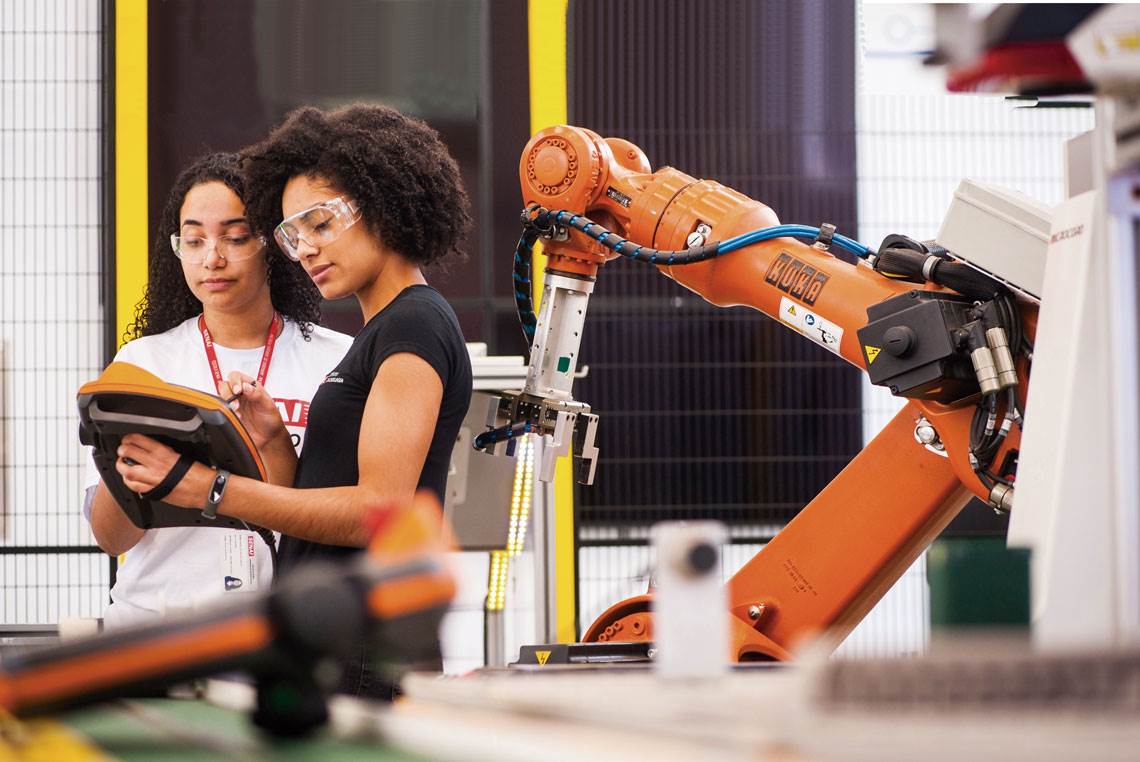A new structural format went into effect for students entering Brazil’s high school education system at the beginning of this year, aimed at making learning more stimulating for young people and more suitable to the needs of the job market, in addition to reducing dropout rates. The new system is based on guidelines stipulated by Law No. 13,415, from 2017. Among its principal reforms is the establishment of a teaching model organized by area of knowledge, rather than by discipline, and the opportunity for young people to undertake technical or vocational training during their high school years. A study ongoing since 2017, conducted by political scientist Gabriela Lotta of the Fundação Getulio Vargas School of Business Administration (EAESP-FGV), shows that some states are taking advantage of the school system reform to initiate sweeping changes, such as increasing the number of full-time schools, while overhauling curricula. However, others have had to freeze renovation projects already underway for a decade, in order to adapt to the new legislation.
– Challenges faced by young people in Brazil
According to the School Census on Basic Education from INEP (the National Institute of Educational Studies and Research), in 2021 there were 7.8 million high school enrollments of students aged 15 to 17 in the country, which represents an increase of 2.9% compared to 2020. A 2021 survey by the NGO Todos pela Educação indicates that the percentage of young people aged 15 to 17 who dropped out before completing high school was 7.1% in 2019, and 4.4% in the second semester of 2021. This number represents a total of 407,000 young people in this age group who gave up on school before completing basic education.
Law No. 13,415 determines that of the 3,000 hours of a total high school workload, 1,800 hours are allocated to a common educational curriculum, while for the other 1,200 hours students can choose elective courses according to five areas of knowledge, or educational tracks: mathematics and its technologies, languages and their technologies, natural sciences and their technologies, applied human and social sciences, and technical and vocational training. Some states, such as São Paulo, have created extra educational tracks, aligned with the guidelines of these main areas. “Because it wasn’t fully regulated by the states and because it established nonconsensual changes, the reform generated situations of ambiguity and conflict,” says Lotta, from EAESP-FGV, who is conducting a longitudinal study to research the new law’s implementation across the country’s 26 states and the Federal District.

Marcelo Justo / FolhapressThe heterogeneous reality of Brazilian schools: a teacher at the blackboard in an indigenous community in São Pedro, AmazonasMarcelo Justo / Folhapress
An article published in 2021 provides partial results from the study, showing that during the period 2017 through 2019, when the reforms began to be adopted, some states already had renovation projects underway. In others, plans were still in early stages or nonexistent. “In states with ongoing reforms that were in alignment with the guidelines of the new law, the impacts were positive and spurred the reformulation of their high school educational systems, such as in Ceará and Pernambuco, as well as in other states that didn’t have any projects initiated yet, but which had adequate resources, teams, and managerial capacity,” reports Lotta. According to INEP, in 2021 Ceará had 293,000 total high school enrollments, including public and private schools, while in Pernambuco the equivalent figure was 312,000. According to the IBGE, in 2019, the school attendance rate for 15- to 17-year-olds in Ceará high schools was over 69%, while in Pernambuco it was above 66%. Other states with projects not in conformance with the new law had to freeze their initiatives, while in states that have less capacity to generate resources and higher levels of inequality and structural problems, the reform faces more difficulties. “This situation tends to increase the amount of educational inequality in Brazil,” she observes. “One area that deserves more attention from government officials is management issues. Even states that have made progress on pedagogical issues still struggle, for example, to organize meals for all-day students and provide transportation for students who do part of their educational track in more than one institution,” Lotta adds. According to how the new law is regulated by a state, schools that lack enough teachers or physical structure to offer certain educational tracks can establish partnerships with other schools, allowing their students to attend different institutions.
A study completed in 2021 with support from FAPESP investigated the educational policies and quality of education in the São Paulo school system during the years 1995 through 2018, with a focus on the transition to a new high school educational structure. The study’s coordinator, pedagogy specialist Márcia Aparecida Jacomini, from the Federal University of São Paulo (UNIFESP), says the study found that from 2007 to 2018, high schools in the São Paulo state system recorded a reduction of more than 176,000 enrollments. Jacomini notes that the night shift saw the biggest drop, with a decrease of 43.6% in enrollments. “Among other factors, the decline in enrollments could be explained by the increase in the number of young people ages 18 to 25 who opt to take the National Skills Certification Exam for Youths and Adults [ENCCEJA],” she observes. The ENCCEJA is a federal government test that assesses the skills, abilities, and knowledge of young people and adults who haven’t completed elementary or high school at the appropriate age. In the case of high school, the established age group is 15 to 17 years old.

Davi Ribeiro / FolhapressStudents in front of the São Paulo public school with the worst scores on the National High School ExamDavi Ribeiro / Folhapress
Regarding the new high school format, one of the study’s researchers, sociologist Ana Paula Corti, from the Federal Institute of Education, Science, and Technology (IFSP), considers that the reform legislation deregulated certain aspects of the Law of Directives and Bases (LDB) such as those that establish the need to serve specific groups, i.e., young people and adults. “The only mention made in the new law regarding the EJA (classroom-based high school equivalency course) is to authorize that this modality be offered 80% virtually, specifically for a segment of our population that includes older people who have little online access,” she observes.
When looking at secondary education from a historical perspective, Professor Dirce Zan, from the University of Campinas (UNICAMP), says that the social pressure for increased schooling in Brazil intensified in the 1990s, contributing to growing high school enrollments at the turn of the 2000s. Zan is one of the coordinators of a state study on secondary education, which has followed the implementation of Law No. 13,415 in state and federal schools in São Paulo since 2018. One of the trends captured by the study involves schools that began working in the full-time format, which then saw a gradual demise of night courses. “We’ve observed that those who work during the day and can’t attend school full time did not return to in-person classes at the beginning of the year. In other words, they are abandoning the school environment,” says Zan. “In order to guarantee that students continue their schooling with the expanded hours, we need to formulate policies to help them remain in the system, such as scholarships and other actions that preclude the need to seek early employment,” she advises.
Another complex issue concerns the choice of educational tracks. Observing that states are regulating the law in different ways, educational policy researcher Fernando Cássio, from the Federal University of ABC (UFABC), explains that, in the state of São Paulo, high school students complete 600 hours of educational track electives, in addition to the 1,800 hours of coursework mandated by the National Common Basic Curriculum (BNCC). “The state has a menu with 34 options for educational tracks. Most of them lack both physical structure, such as laboratories, and teachers with adequate qualifications. Institutions located in vulnerable places, such as in indigenous areas or in the prison system, provide only one learning track and the student hasn’t any choice to make,” says Cássio, who has been studying public school curricula since 2015. In 2020, according to INEP, the state of São Paulo recorded 1.4 million high school enrollments, including public and private schools.

Zé Carlos Barretta / FolhapressA group of students from Youth and Adult Education (EJA) in São PauloZé Carlos Barretta / Folhapress
Cássio adds that, in São Paulo, educational tracks that involve technical training provide for a workload of 900 hours, which does not entitle students to a vocational education diploma equal to those students earn at the State Technical Schools (ETEC) and federal institutes. Jacomini, from UNIFESP, believes the reform could use the federal institutes and the ETEC system as a model, as they offer technical qualification integrated with high school education. “One of the preconditions of the new law should be the expansion of these networks,” she comments. In the 2021 edition of the Programme for International Student Assessment (PISA), an international student evaluation conducted by the Organization for Economic Cooperation and Development (OECD), the average score for reading at ETEC schools was 520, well above the national average of 413, even surpassing average scores of countries such as the United States, the United Kingdom, Japan, and South Korea.
Although she recognizes the challenges inherent in its implementation, particularly as regards inequality in Brazil, Ana Luiza Marino Kuller, education coordinator at the National Service for Commercial Education (SENAC São Paulo), sees the initiative in a positive light. “Organizing education through knowledge areas and educational tracks, rather than through disciplines, is an attempt to prevent knowledge from becoming disconnected from a young person’s life,” she argues. In 2019, SENAC São Paulo began offering high school education that was already adapted to the parameters of the new legislation. Upon completion of the course, the student also receives a technical education diploma, unlike students graduating from public institutions that provide only short-term vocational training, without the right to a specific certification.
Almério Melquíades Araújo, coordinator of Secondary and Technical Education at Centro Paula Souza, responsible for ETEC in São Paulo, assesses the issue in a similar way. “To engage students, we need to overcome the traditional format of disciplines and classroom lectures and adopt an interactive, project-based process.” The new format, however, does require more preparation from professors, he observes. “It’s no use changing the school curriculum and not qualifying teachers. Brazil’s teaching degrees still function from a traditional model, guided by disciplines,” he concludes, noting that the Paula Souza Center periodically offers training programs to its faculty.
Besides Brazil, Portugal, Spain and France have also invested in reforming their secondary education systems, backed by OECD and World Bank guidelines. UNIFESP sociologist Débora Goulart is researching, with FAPESP support, the structural reform of the French lycée system, the equivalent of Brazil’s high schools. In France, there are three types of lycées: general education, technological, and vocational. General education and technological high schools last three years and prepare the student to enter college. In the lycée professionnel—vocational high schools—there are two tracks: a three-year course that prepares students for continuing studies at an institution of higher education, and a short, two-year training course, which provides technical training, and does not allow entry into a higher education program. “These courses permit a student to go straight from high school into the job market, to work as a carpenter or lighting tech, for example,” she explains. According to Goulart, in 2018, after the reform, students from the general and technological high schools began to indicate that there were ten universities where they wanted to study and that should be linked to their elective in-depth courses taken in the lycée system. “After graduating from high school, students prepare a dossier, which is evaluated during the selection process for admission to the university,” she explains. Goulart also sees problems in the availability of elective learning tracks, reporting that only large high schools are able to offer multiple paths, leading to increased school inequality.
In Germany, a country considered an authority in the provision of technical and vocational education, workers with nonacademic professional training represent 64.4% of the labor market. In Brazil, that number is 8%. In addition, 18.5% of professionals have higher education—the equivalent statistic in Brazil is 9.25%. Marcio Weichert, coordinator of the German Science and Innovation Center in São Paulo, explains that in Germany, at the age of ten, children are sent to different schools according to their performance. Those who study in less demanding institutions are prepared to undertake vocational educations, while better performers are educated to vie for entrance into universities. Weichert notes that at the beginning of their careers, people who complete technical education programs tend to receive almost the same salary as college graduates during the early stages of their professional careers. “However, those who have college educations have better opportunities for advancement,” he observes.
Projects
Educational policy in the São Paulo state school system (1995 to 2018) (nº 18/09983-0); Grant Mechanism Regular Research Grant; Principal Investigator Márcia Aparecida Jacomini (UNIFESP); Investment R$88,583.16.
The reform of the Lycée Français (2017–2021) from the students’ perspective: Flexibility and employability (nº 21/10659-6); Grant Mechanism Research fellowship abroad; Principal Investigator Débora Cristina Goulart (UNIFESP); Investment R$97,881.
Scientific articles
LOTTA, G. S. et al. Efeito de mudança no contexto de implementação de uma política multinível: análise do caso da reforma do Ensino Médio no Brasil. Revista de Administração Pública. Rio de Janeiro 55 (2): pp. 395–413, mar.–apr. 2021.
GOULART, D. C. et al. O currículo paulista etapa Ensino Médio: educação pública, interesses empresariais e implicações. Pensata. vol. 10, n. 1. july 2021.
CORTI, A. P. Política e significantes vazios: uma análise da reforma do ensino médio de 2017. Educação em revista. n. 35, 2019.
